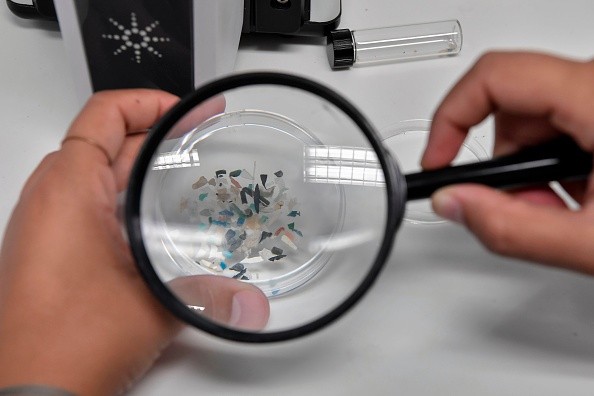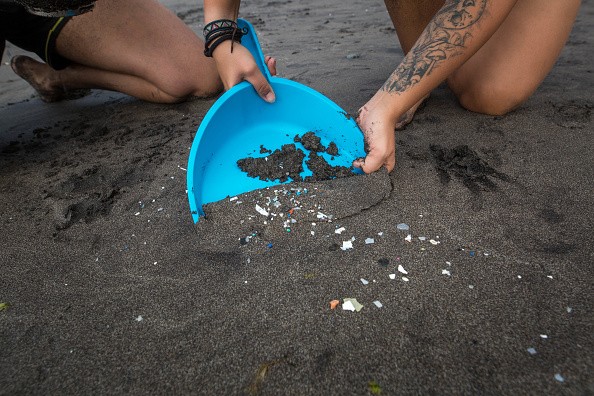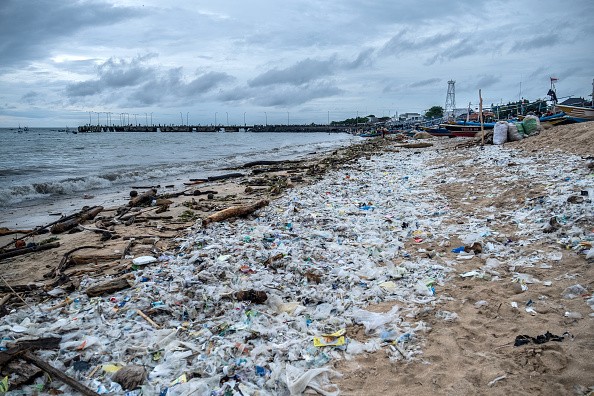According to a new study, microplastics may deposit and remain in riverbeds for up to seven years before washing into the ocean.

The researchers previously thought that lightweight microplastics passed through rivers swiftly, seldom interacting with riverbed sediments because rivers are in near-constant motion.
Hyporheic Exchange

Hyporheic exchange, a process in which surface water interacts with water in the riverbed, can capture lightweight microplastics that would otherwise float, according to Northwestern University and the University of Birmingham in England.
The research was published in the journal Science Advances (Jan. 12). From sources of plastic contamination throughout the water stream, it is the first study of microplastic accumulation and residence periods inside freshwater systems. The new model concentrates on hard-to-measure but abundant microplastics at 100 micrometers and smaller and explains dynamical mechanisms that impact particles, such as a hyporheic exchange.
What we know about plastic pollution
A Northwestern University professor and one of the study's senior authors, Aaron Packman, stated, "Most of what we know about plastic pollution comes from the oceans because it's highly apparent there." As a result of the lack of information on the fate of tiny plastic particles, pieces, and fibers discharged from towns and wastewater, most of the research thus far has focused on documenting where plastic particles may be discovered and how much is reaching the ocean.
According to our research, it takes a long time for microplastics from urban effluent to accumulate near the river's source and be transferred downstream to the seas.
Packman is the head of the Northwestern Center for Water Research and a civil and environmental engineering professor at Northwestern's McCormick School of Engineering. He is also a member of Northwestern University's Institute for Sustainability and Energy's Program on Plastics, Ecosystems, and Public Health. The study's first author is Jennifer Drummond, a research fellow at the University of Birmingham and a former Ph.D. student in Packman's group.
Microplastics in Rivers
Packman, Drummond, and their colleagues created a novel model to predict how individual particles enter freshwater systems, settle, and then remobilize and redistribute later in the system.
Hyporheic exchange mechanisms, which play a crucial role in keeping microplastics within rivers, are included in the model for the first time. Even though it is generally recognized that the hyporheic exchange mechanism impacts the movement and flow of natural organic particles across freshwater systems, the microplastic buildup is rarely discussed.
We knew this occurred with natural organic particles," Packman said. "The retention of microplastics we discovered wasn't a surprise." A lot of plastics build in the freshwater environment because they don't disintegrate, so they stay in the freshwater ecosystem for a long time-until they are swept away by river flow."
To run the model, the researchers utilized global data on urban wastewater discharges and river flow conditions.
The researchers discovered that microplastic contamination is more prevalent at a river or stream source using the new model (known as the "headwaters"). Microplastic particles migrated at a pace of five hours per kilometer in headwaters. However, this movement slowed to a crawl during low-flow circumstances, taking up to seven years to traverse a single kilometer, according to the researchers. Organisms are more prone to swallow microplastics in the water in these places, thereby jeopardizing ecosystem health.
Spreading

As microplastics traveled further downstream from the headwaters, their residence time reduced. In major streams, residency times were the shortest.
Packman expects that researchers will be able to analyze better and understand the long-term effects of microplastic contamination on freshwater systems with this knowledge.
'These deposited microplastics create ecological damage,' he said, adding that due to the enormous number of deposited particles, it would take a long time for them to be washed out of our freshwater ecosystems. It's worth thinking about whether we need ways to remove these plastics to restore freshwater ecosystems, says the researcher.
For more environmental news, don't forget to follow Nature World News!
© 2025 NatureWorldNews.com All rights reserved. Do not reproduce without permission.





